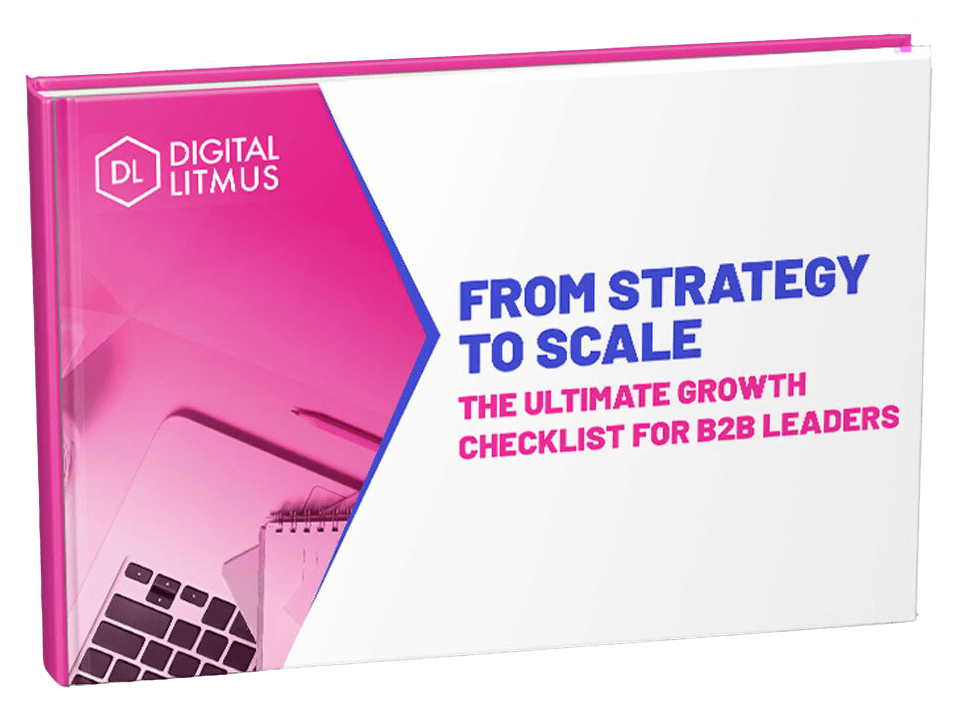How can you tell if your marketing efforts are worth the time and money?
You track metrics.
If you’re charged with running an inbound marketing programme for a software-as-a-service (SaaS) business, being on top of the right metrics is absolutely essential. Given the major role that metrics play in the success of every SaaS business, we’ve created this article as a primer on SaaS inbound marketing metrics.
Pipeline Metrics or Lifecycle Stages
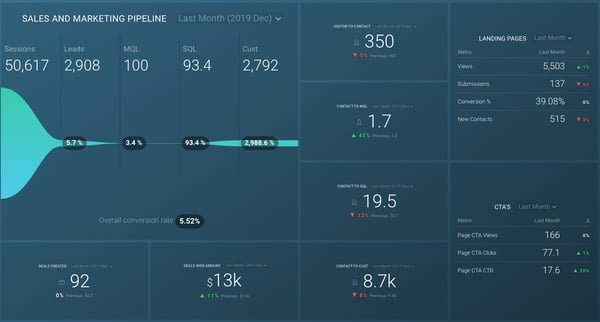
Pipeline metrics show where prospects are in the buyer journey and help evaluate and understand the effectiveness of all of your marketing efforts.
There are many different approaches to these metrics, but for the purposes of this article, we’ll explore the standard lifecycle stages used by HubSpot, and the definitions we prefer to use.
Subscribers
Subscribers are contacts that are familiar with your business and have chosen to opt in to your communications. In most instances, these individuals have signed up via a regular blog or newsletter offering.
Leads
Leads are contacts that have shown signs of sales readiness beyond just being a simple subscriber. These are individuals who have explicitly shared more than their email address, in most cases this is in exchange for a content offering.
Marketing Qualified Leads (MQLs)
MQLs are often poorly defined and misunderstood. Our preferred definition is that an MQL represents a lead that has converted on a bottom-of-the-funnel asset or submitted a contact form, and has therefore indicated a clear desire to talk to sales.
Sales Qualified Leads (SQLs)
Sadly SQLs are often just as mis-defined as MQLs! However, we find a useful definition is a Sales Accepted Lead - that is to say, a label or flag that has been applied by sales to an MQL that has passed some further manual qualification by the sales team.
Opportunities
An opportunity is a contact that has a properly quantified and qualified deal associated with it, that has yet to be won.
Customer (or Closed Won)
Customers are the opportunities that you have successfully closed and are now customers..
Lost Sales (or Closed Lost)
Lost sales are the qualified opportunities that did not follow through and you were unable to close.
Campaign Performance Metrics
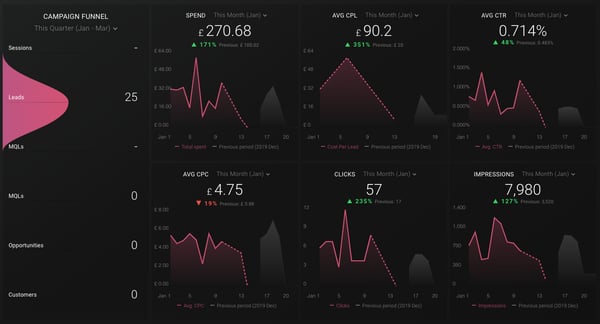
Understanding which data points you should be measuring for your campaigns is essential. You can’t afford to be looking at the wrong data when it matters most, and so it’s important you understand how to evaluate campaign performance. There are many metrics you could track, but the two that should receive the most focus are the following.
Cost Per Acquisition (CPA)
Cost per acquisition is the average cost of the marketing activity that gets customers to a particular stage in the sales funnel. This may be the CPA of a marketing qualified lead, or all the way through to a sale. Whatever the case, the CPA helps to determine if your marketing activity is justified and is a great barometer of campaign success.
Return on Investment (ROI)
Return on investment is the profit attributable to marketing activity. Put simply, it’s the revenue generated and attributed to marketing activity, minus the costs incurred by marketing. This is often presented as a percentage of revenue to cost.
Blogging & Content Metrics
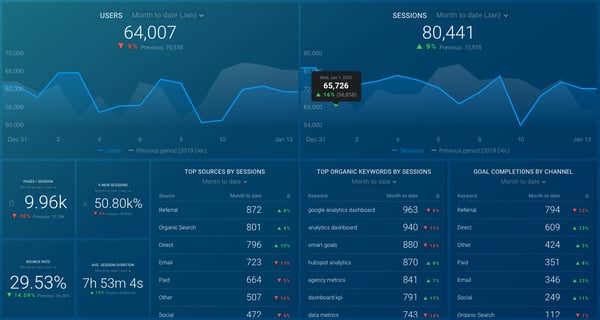
Your content is designed to engage your target audience. But how do you measure this engagement? What does good look like? What else matters? These are all good questions.
When it comes to blogs, these are the key metrics you should consider:
Bounce rate
The bounce rate is the number of people who leave your website straight away, without viewing another page, after engaging with your blog.
This metric plays a key role in how well your content ranks from an SEO perspective. If the bounce rate is high, search engines are likely to penalise its visibility, as its quality is considered to be too low.
Visits
The number of visits to your content is a blunt instrument but it does give you a yardstick measure of how popular your content is.
Time On Page
Time on page is the average amount of time each visitor spent reading the blog and is a good way to establish whether or not your content is resonating with your prospects.
Click Through Rate (CTR)
The click through rate, is the number of people who engaged with the call-to-action in the blog. This link typically leads to the next stage in the funnel, whether that’s a piece of gated content, case study or just another blog.
With an appreciation for the right metrics, you’ll be able to audit your blogs, identify what aligns with your audience’s interests and adapt accordingly. This will help increase the quality of what you produce and the value it delivers.
Conversion Rate
Conversion rate is the number of people who supply their details, in comparison to the number of people who visit the page. So if 100 prospects visit the page and 20 offer their information, then the conversion rate would be 20%. This is the most important metric to consider for landing pages as it encapsulates their entire purpose for existing in the first place.
If you’re charged with running an inbound marketing programme for a software-as-a-service (SaaS) business, being on top of the right metrics is absolutely essential. Given the major role that metrics play in the success of every SaaS business, we’ve created this article as a primer on SaaS inbound marketing metrics.
Ready to skyrocket your online presence? Explore our Inbound Marketing services today!
Email Metrics
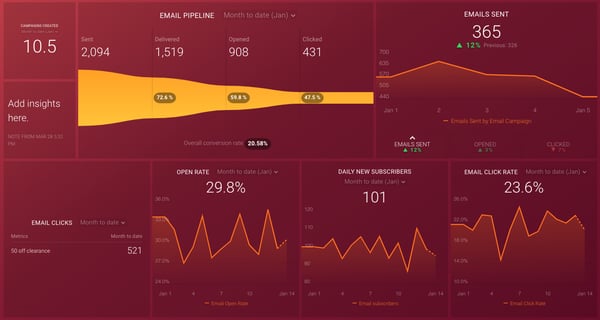
Your email communications will be sent to prospects and customers alike with messaging aligned to their interests and your objectives. To evaluate the success of your emails, the key metrics to consider are as follows...
Open Rate
The open rate is the number of people who open an email in comparison to the number who receive it. This is often displayed as a percentage. So if 100 people receive your email and 10 open it, the open rate is 10%.
Understanding how many prospects/customers are opening your emails is important to regularly improving the value they deliver. Remember, your target audience were happy enough to give you their precious data, so if they aren’t opening emails, it may suggest something isn’t quite right with your messaging.
In the event your email open rate is low, then you need to review your subject lines and the subject matters that the emails cover. It may be that they’re not relevant or punchy enough for your audience, and so are being ignored. To improve open rates, it may be worth conducting A/B tests to measure the impact of your subject lines and evaluate how your audience respond. This will help you get a better grasp of what they’re looking for.
Click Through Rate
Your emails are designed to encourage your prospects to engage with your call to action. In most instances, this is their primary objective, so it’s important that it’s monitored and tracked. This is known as the click through rate - the number of people who click on the CTA compared to the number of people who open the email. This figure is also shown as a percentage, so if 40 people open an email and 10 engage with the CTA, the click through rate is 25%.
Measuring the open rates and click through rates of your emails allows you to evaluate their effectiveness and recognise what does and doesn’t work. This is critical to driving improvement and optimizing the tactic in your SaaS marketing efforts.
Reply Rate
Reply rate is typically monitored in outbound programmes to measure the % of people who’ve responded to the call-to-action.
The reply rate is useful as it’s indicative of the attractiveness of the offering and the way it is communicated in the email. A poor reply rate may suggest the wording of the CTA is wrong, the email copy is failing to entice the reader, or the offer is just not strong enough.
Unsubscribe Rate
The unsubscribe rate is the percentage of people who receive an email and request to receive no further communication. This is often a good indicator of email content relevancy and reflective of the value of communications being sent.
Bounce Rate
An email bounce rate is the percentage of email addresses in a subscriber list that didn’t receive the message because it was returned by a recipient mail server.
This is often broken into 2 categories, hard bounce and soft bounce.
- Hard Bounce: Email bounces back to the sender undelivered, without being received by the recipient’s email server.
- Soft Bounce: Email bounces back to the sender undelivered, despite being received by the recipient’s email server.
These bounce rates typically reflect the quality of the data being used and is often indicative of messaging relevance.
SaaS Customer Metrics
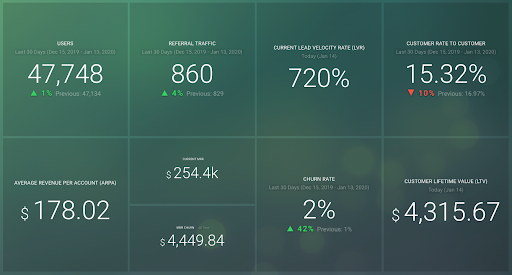
The following metrics reflect the nature of the SaaS customer relationship dynamic and are integral for understanding the performance of a SaaS product with a recurring payment business model.
Average Customer Renewal Rate
The average customer renewal rate is the percentage of customers who renew after their contract is up. This is a key metric, as it’s often indicative of customer satisfaction and plays a major role in your long-term profitability.
Average Customer Lifetime Value
The average customer lifetime value is the amount of revenue you typically collect per customer across their lifetime of using your product.
Upsell
Upsell is the number or value of SaaS customers who either upgrade or buy additional services after their initial purchase. This is typically reflected in a percentage or absolute value.
Churn
Churn is the number of customers who leave after their initial contract. This is often a key metric for SaaS organisations as churn is typically one of the most significant influencers on profit. Maintaining customer lifetime value is often a priority and so retention and churn management are key.
Activation Rate
The number of prospects who fully engage with your product. Activation definition varies from product to product. It is often seen as the actions that a customer needs to take before they have the ‘Aha moment’ with your product.
Net Promoter Score & Referral
Net Promoter Score is the standard metric that SaaS businesses use to determine how happy their customers are with their product. It provides a scale of how likely a customer is to refer the product to somebody they know. This metric can be used hand-in-hand with actual referral. If your product has a referral mechanic, tracking how much this is being used gives you a clear understanding of customer satisfaction (not to mention a free customer acquisition channel!).
It’s undeniable, in SaaS inbound marketing, data makes the world go round. Without it, you’re unlikely to see success in your marketing campaigns, and even if you are doing well, you probably won’t realise it.
Metrics give you visibility of performance. Without visibility, it’s impossible to identify strengths and weaknesses, or make improvements. Getting on top of your SaaS inbound metrics needs to be top of your marketing priorities to take your marketing to the next level.

Are you a B2B company looking to accelerate growth?
Our connected sales, marketing, and HubSpot agency services might be just the ticket. Get in touch for your free growth assessment to find out how you can accelerate business growth today.

